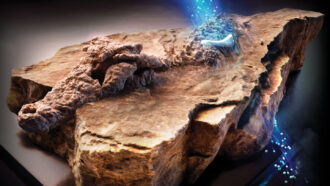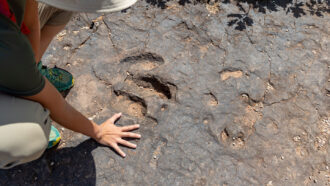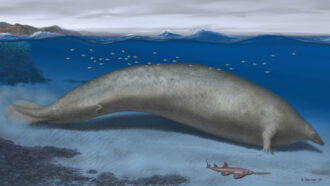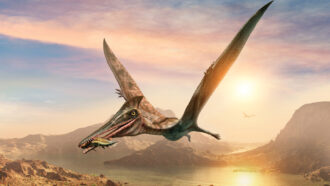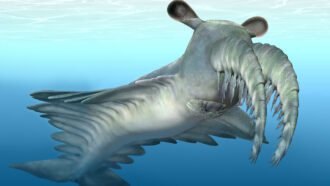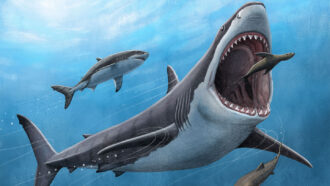A flexible bone that aids mammals in chewing arose during the Jurassic
The structure may have helped give rise to the Age of Mammals
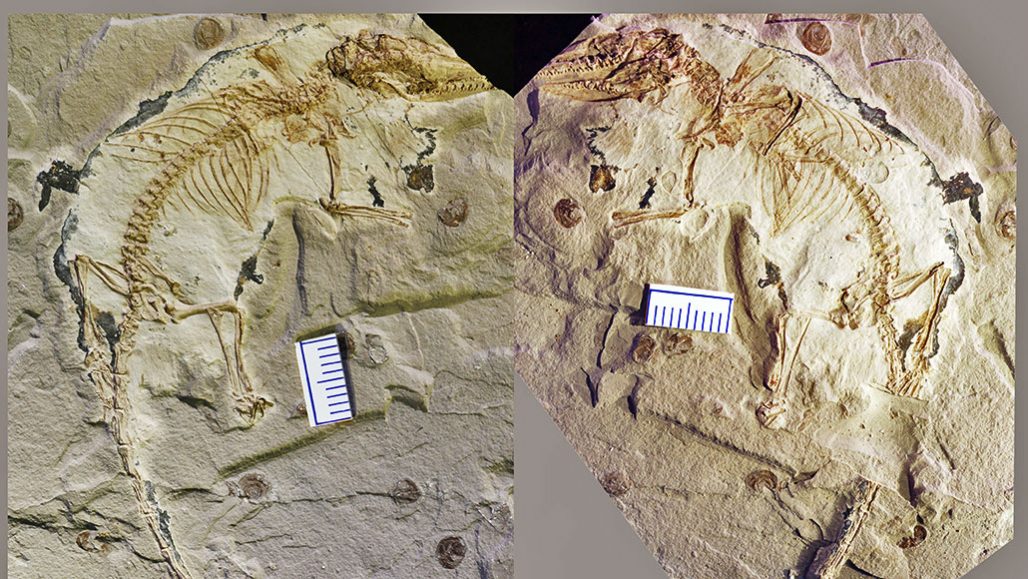
The shrew-sized early mammal relative Microdocodon gracilis lived about 165 million years ago. Its fossil reveals that the shape of a flexible bone structure called a hyoid that aids in chewing and is similar to that of modern mammals.
Z.-X. Luo/Univ. of Chicago
Millions of years ago, an early relative of modern mammals had a tiny, saddle-shaped bony structure connected to the jaw. Today, that set of bones, called the hyoid, help all mammals to chew and swallow. Now scientists say the mammal hyoid may be one secret to our eventual success. It enabled mammals to spread into all the different ecological niches they occupy today.
Microdocodon gracilis was a shrew-sized animal. It lived about 165 million years ago in east Asia. Chang-Fu Zhou led the team that examined an M. gracilis fossil. He’s a vertebrate paleontologist. He works at the Paleontological Museum of Liaoning in Shenyang, China. The team discovered that the fossil included a beautifully preserved hyoid. That structure bears a striking resemblance to the hyoids of modern mammals. The researchers reported their findings July 19 in Science.
When it comes to food, mammals have found ways to survive in many types of environments. Modern species have teeth specially adapted for their differing diets. Large carnivores like lions and tigers have sharp, cutting blades. Some small mammals have high cusps on their teeth to help crunch insects. Other species have ridge-packed teeth to help grind down plants.
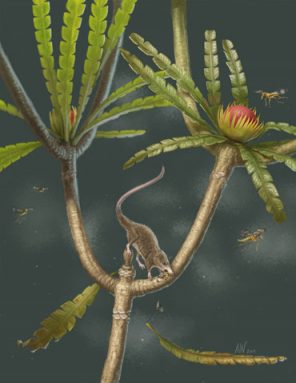
But one thing all mammals have in common is that we chew. That breaks food into tiny pieces before swallowing. That’s unlike, say, reptiles. Those animals swallow food whole, says Zhe-Xi Luo. He’s a vertebrate paleontologist at the University of Chicago in Illinois. Also, mammals’ mouths, throats and tongues are designed to be flexible and strong enough to suckle milk. This is a defining trait of mammals.
“The food transport and the swallowing of the chewed-up food is all controlled by muscle related to this highly mobile bone” called the hyoid, Luo says.
All jawed vertebrates, from fishes to felines, have a hyoid. But in mammals the hyoid is uniquely mobile. Luo likens it to a child’s backyard swing, with a curved seat suspended by two chains. “[The hyoid] can bend and is flexible, like a kid swinging back and forth,” he says.
Old bone
Scientists didn’t know if the evolution of the flexible hyoid pre-dated the rise of mammals or came later. The Jurassic Period dates to between 201 million years and 145 million years ago. In that time, early mammalian relatives were already diversifying in terms of food niches. And they had a variety of different kinds of teeth. That suggested the animals likely had some sort of mobile hyoid, Luo says. But what the bones really looked like remained unclear.
Enter M. gracilis. It represents a key stage in mammal evolution. Early mammal relatives that lived in the late Permian and Triassic periods, before the Jurassic, had a rigid hyoid. Mammals that arose during the Cenozoic Era had a mobile hyoid. The Cenozoic stretches from 65 million years ago to modern times. It is sometimes called the Age of Mammals.
M. gracilis is the first Jurassic mammal relative found with a well-preserved hyoid. This enabled researchers to see the distinctive shape. “Once we knew what to look for, we started to search for … similar structures in other extinct mammal lineages,” Luo says. “And we found them left and right.”
That suggests this structure was common among mammal relatives from the Jurassic. And it may have been an important part of mammals’ ultimate ability to diversify, the researchers say. “Mammals just chewed and swallowed themselves into evolutionary success,” Luo says.
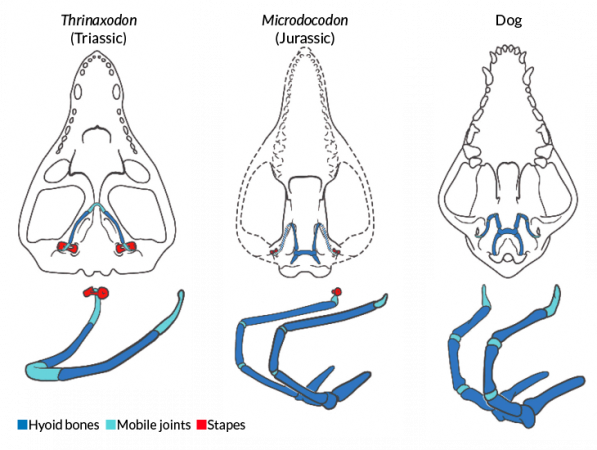
The scientists realized something else as well. The presence of a mobile hyoid pre-dates the evolution of another defining feature of mammals. This is the three middle ear bones, and their separation from the jaw. Those ear bones are called the malleus, incus and stapes. They are the secret to mammals’ sharp hearing.
Some thought that separation might have also led to development of the mobile hyoid in mammals. Instead, this new fossil evidence suggests these two adaptations were not directly related.
That was a particularly interesting aspect of the discovery, says vertebrate paleontologist Simone Hoffmann. She’s at the New York Institute of Technology in Old Westbury. She coauthored a commentary in the same issue of Science.
“The hyoid is used for chewing, but also for suckling milk, which is very closely tied to mammals,” says Hoffmann. “And [this fossil] suggests the hyoid bones may have developed way before mammals themselves. It might change our understanding of what attributes we typically think of as mammal attributes.”
Correction: This story was updated to correct the wrong pronouns this story initially used when referring to Simone Hoffmann.


